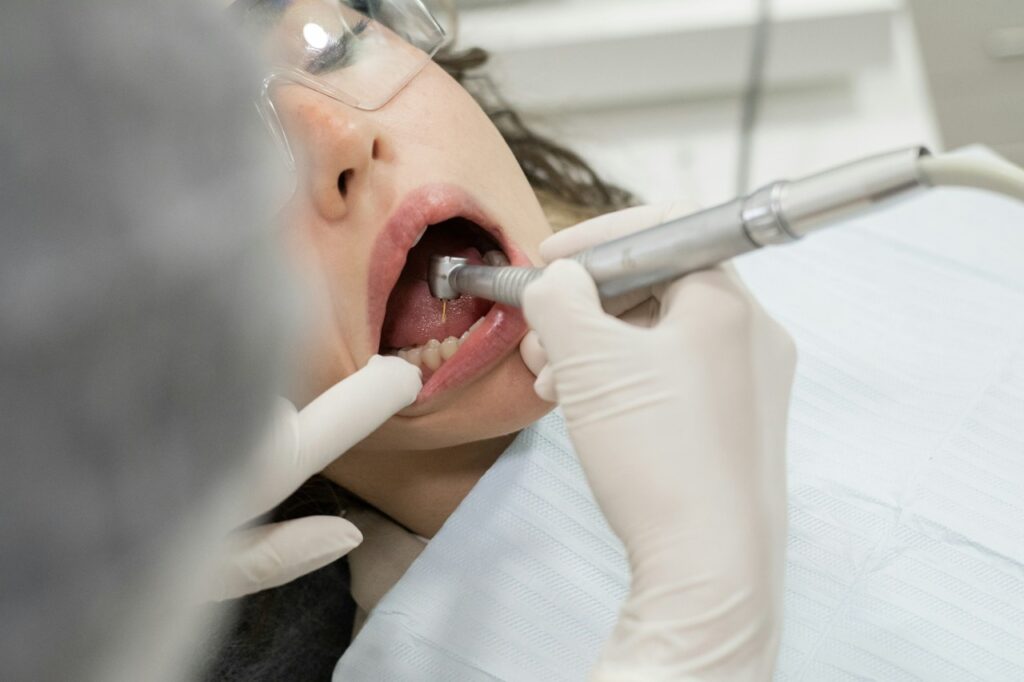Dental bridges are a practical solution for people missing one or more teeth. They help fill the gap left by missing teeth, which can significantly enhance your smile and improve your ability to chew and speak properly. These bridges are anchored either on natural teeth or dental implants, providing sturdy support for replacement teeth.
When teeth are missing, it affects much more than just your appearance. Gaps can lead to shifting of the remaining teeth, causing bite issues and potential jaw problems. Dental bridges serve an essential role in maintaining the structural integrity of your mouth and ensuring that your teeth remain aligned properly.
Exploring dental bridges as a restoration option might be the answer you’re looking for if you’re facing these challenges. With the right information and dental support, you can make informed decisions about your dental health and enjoy the benefits of a complete and confident smile.
Understanding Dental Bridges
Dental bridges are a reliable solution for replacing missing teeth. Acting as a bridge, they span the gap where teeth are missing, using crowns on either side of the gap to hold the replacement teeth securely in place. These crowns are attached to natural teeth or implants, providing stable support. Bridges restore your smile and help you maintain facial shape, enhancing both function and appearance.
Different types of dental bridges are available to suit various needs:
– Traditional Bridges: These are the most common and involve creating crowns for teeth on either side of the gap with pontics, or false teeth, in between.
– Cantilever Bridges: Used when there are adjacent teeth on only one side of the missing tooth or teeth.
– Maryland Bonded Bridges: Also known as a resin-bonded bridge, these use a metal or porcelain framework to bond the replacement teeth to the back of existing teeth.
– Implant-Supported Bridges: Suitable when multiple teeth are missing, these are supported entirely by dental implants for added stability.
Dental bridges work to restore teeth by filling spaces that might otherwise cause other teeth to shift, leading to potential bite problems and jaw pain. They help distribute the forces in your bite properly by replacing missing teeth and prevent other dental issues related to misalignment. By closing gaps, bridges not only make eating and speaking easier but also support facial tissues, preserving the natural structure of your face.
Signs You Might Need a Dental Bridge
Recognizing when you might need a dental bridge is crucial for maintaining good oral health. Common indicators of missing teeth include noticeable gaps in your smile, difficulty chewing, and speech changes. If food frequently gets trapped in spaces where teeth used to be, it might lead to further dental issues like decay and gum disease.
Missing teeth impact your oral health significantly. They can cause neighbouring teeth to drift into the empty space, potentially leading to bite misalignment, which can cause discomfort or even pain in the jaw. This misalignment often makes cleaning difficult, increasing the risk of plaque buildup. Missing teeth also sometimes affect your smile’s aesthetics, which can impact confidence and self-esteem.
Dental bridges address these concerns by restoring interrupted paths and providing stability. Bridges improve chewing by efficiently distributing the biting force, making eating more comfortable. They also help with articulation and speech clarity, as missing teeth can affect the way words are formed. Filling in gaps supports the surrounding teeth and prevents movement that can cause jaw stress or bone loss.
If you notice any of these signs or experience discomfort due to missing teeth, discussing dental bridge options with your dentist could be a wise step toward improving your quality of life and dental health.
Comparing Dental Bridges to Other Options
When weighing the best option for replacing missing teeth, it’s essential to compare dental bridges with other possibilities, such as dental implants and partial dentures. Understanding the differences helps you make an informed decision tailored to your needs.
Dental bridges and dental implants offer distinct benefits. While bridges rely on adjacent teeth for support, implants are directly anchored into the jawbone, providing a more permanent solution. Implants can prevent bone loss but typically require a longer treatment time. Bridges, on the other hand, can be quicker to install and are less invasive, making them suitable for those who may not want surgery.
Partial dentures are another alternative, but dental bridges often provide more stability and a natural appearance. Bridges offer a fixed solution that does not require daily removal, unlike partial dentures, which might feel bulkier and require extra cleaning care.
Cost and long-term maintenance are significant factors in choosing a dental restoration method. Bridges generally have a lower initial cost than implants and can last for many years with proper care. They require regular dental visits to ensure they remain in good condition. Evaluating your oral health needs and lifestyle will guide you in deciding which option aligns best with your goals.
Preparing for a Dental Bridge Procedure
Getting a dental bridge involves several steps, and being prepared can make the process smoother. It begins with an initial consultation, where your dentist evaluates your oral health and discusses your goals. This assessment helps determine the most suitable bridge type for you.
During the fitting process, the dentist prepares your adjacent teeth by reshaping them to ensure the crowns fit correctly. A detailed impression of your teeth is made to create a custom bridge. While awaiting your permanent bridge, a temporary one might be placed to protect your teeth.
After the final bridge is fitted, proper aftercare ensures its longevity and comfort.
Here are some tips for taking care of your new bridge:
– Brush twice a day using a soft-bristled toothbrush.
– Floss daily, including underneath the bridge.
– Avoid hard and sticky foods to prevent damage.
– Visit the dentist regularly for check-ups.
By following these guidelines, you can help maintain your bridge’s stability and functionality for years to come.
Conclusion
Dental bridges play a crucial role in restoring smiles and improving oral health, providing solutions for missing teeth that might otherwise cause more issues. They offer stability and help fill gaps, enhancing your ability to chew and speak. By thoroughly understanding how bridges compare with other options, you can make a choice that suits your preferences and dental health needs.
Looking to restore your smile and confidence? At Pickering Dental Services, our experienced team of Ajax dentists is ready to help you explore the best options for replacing missing teeth, including dental bridges. Book a consultation today and take the first step towards a healthier, happier smile.



